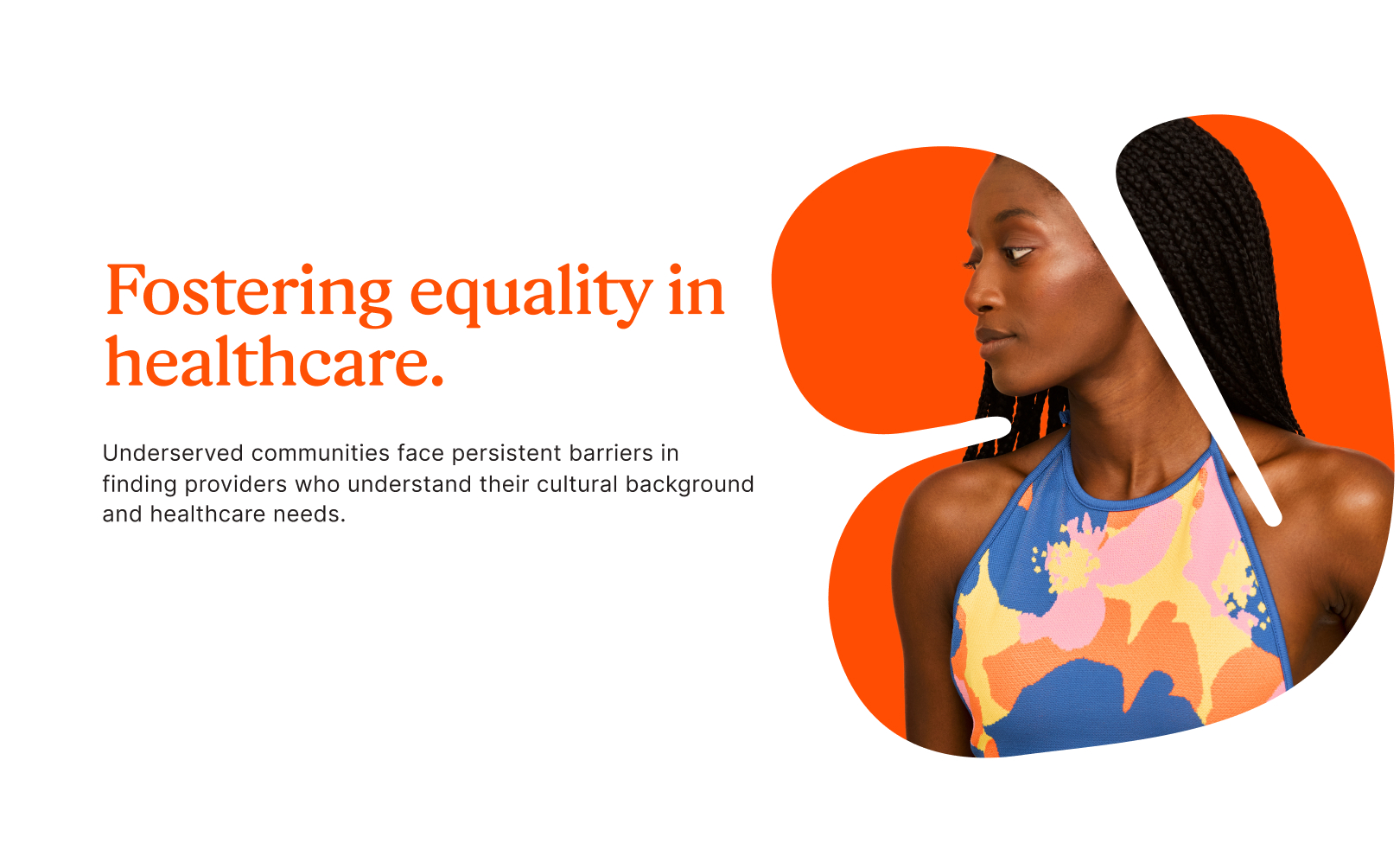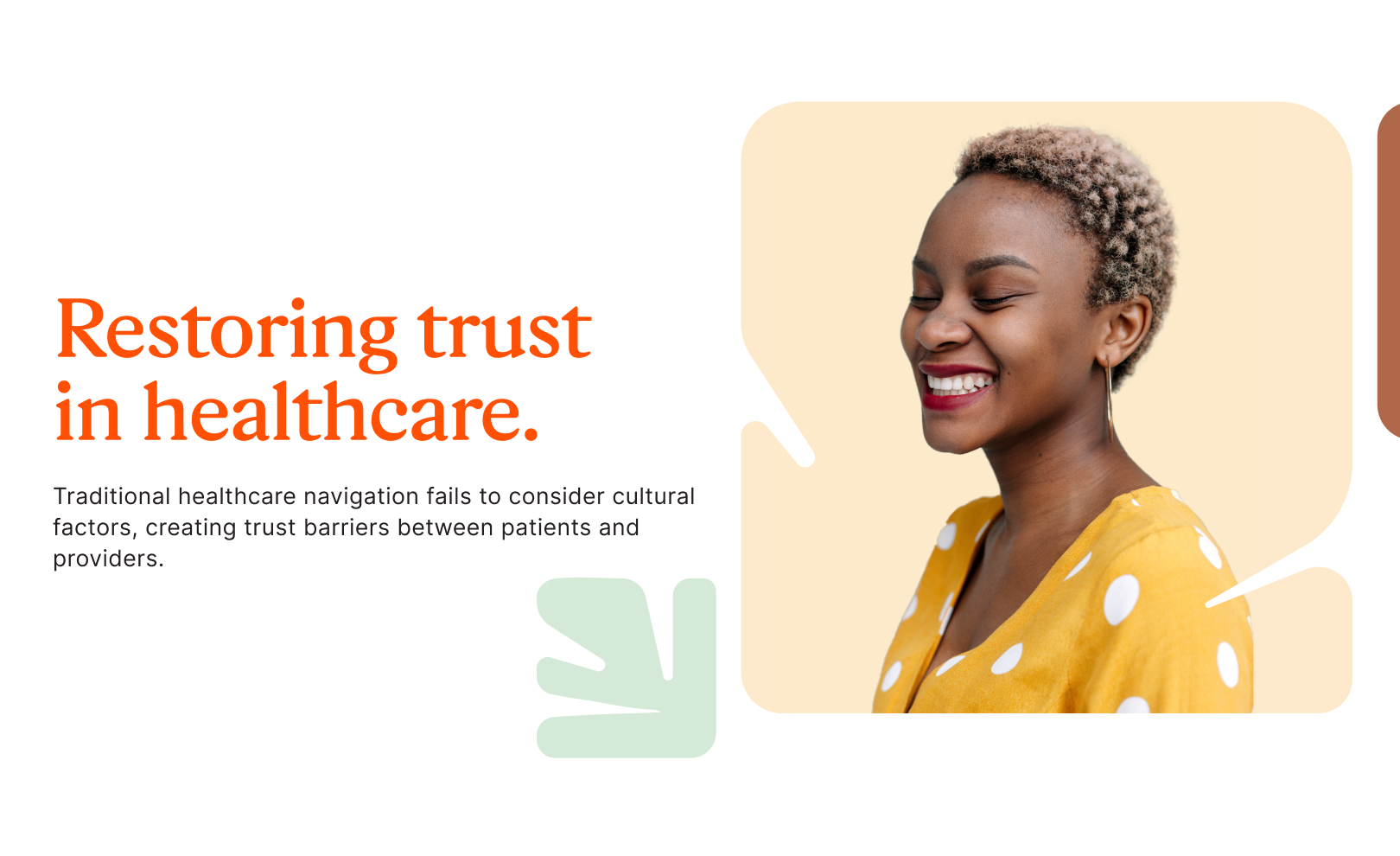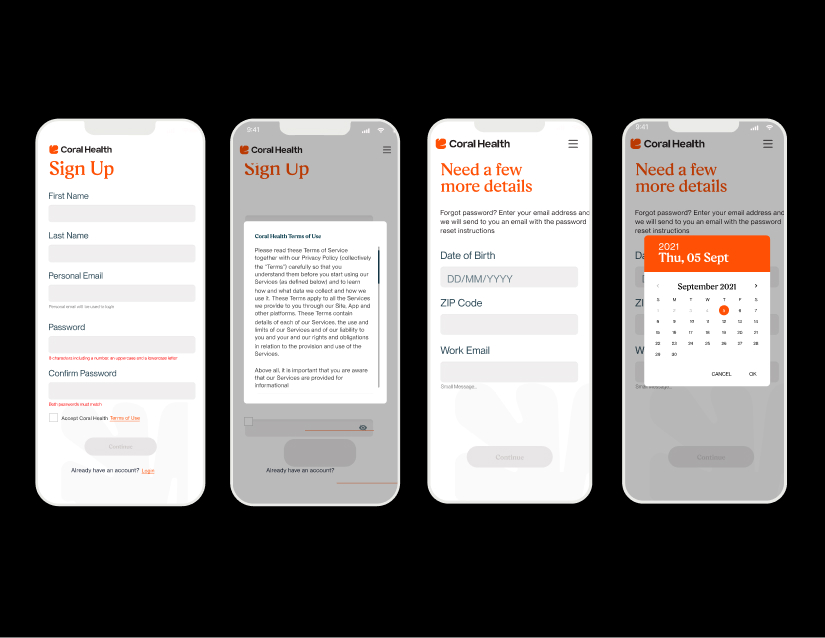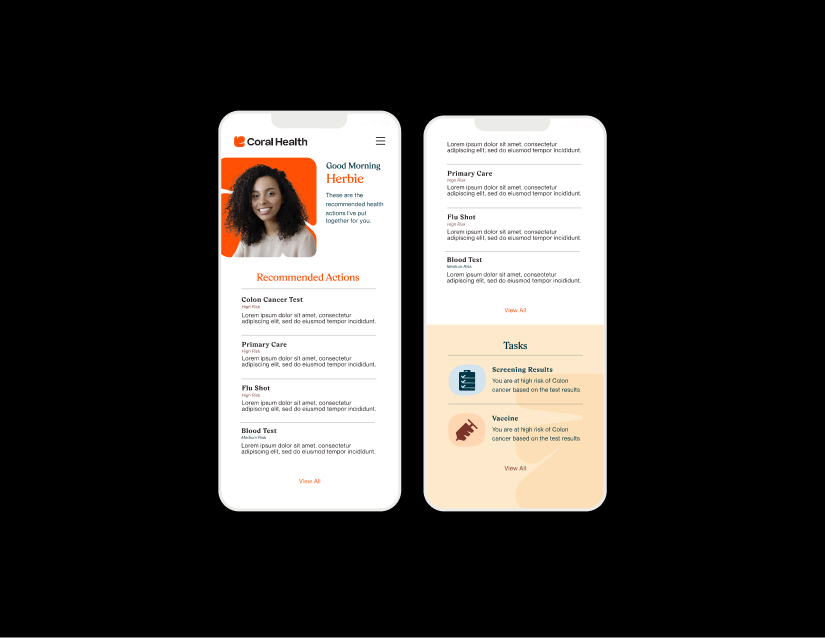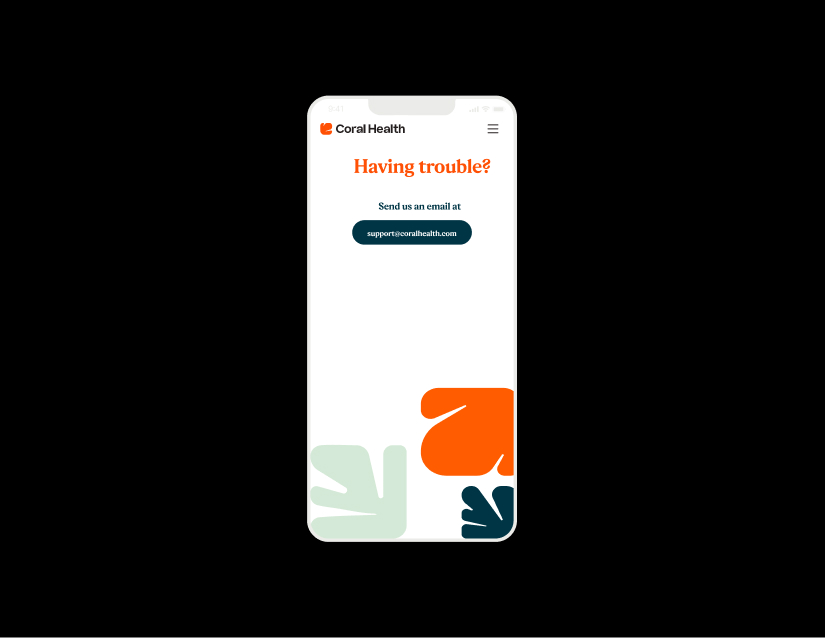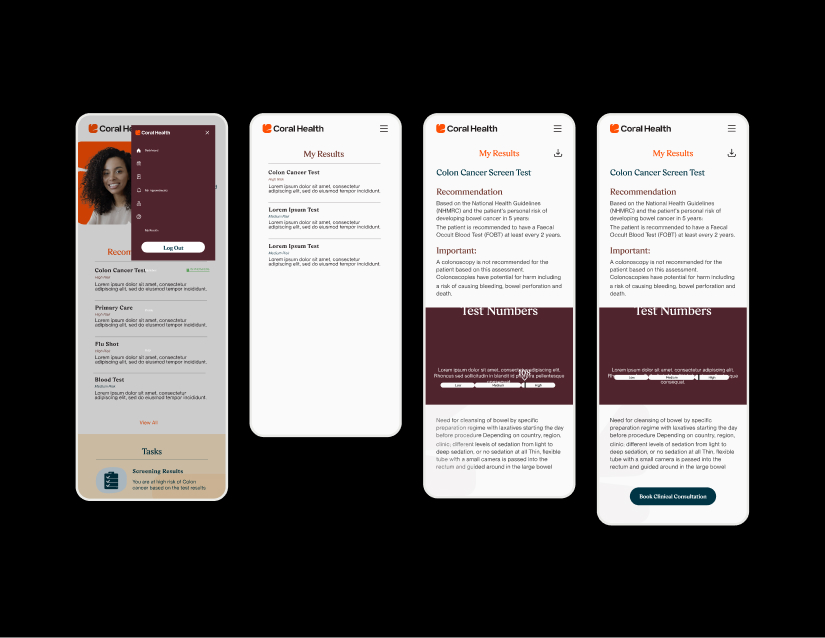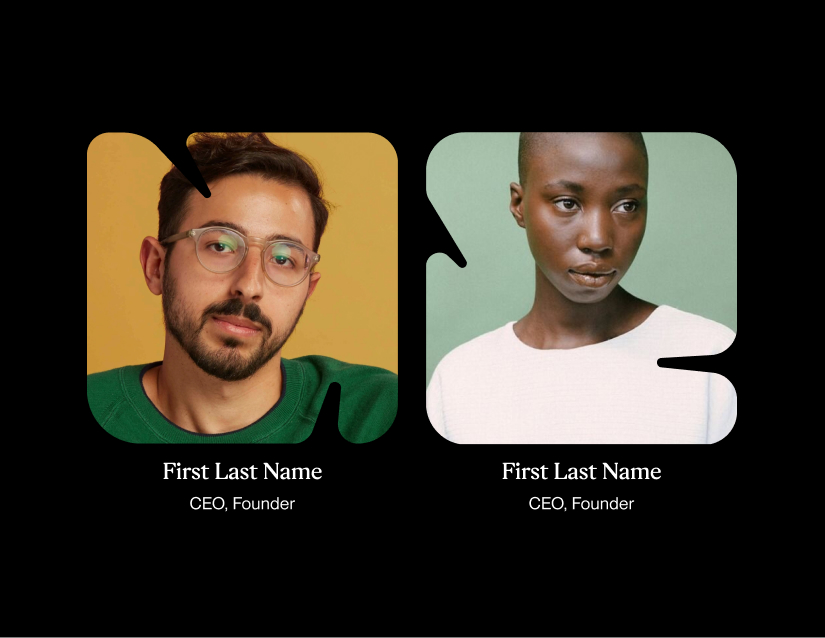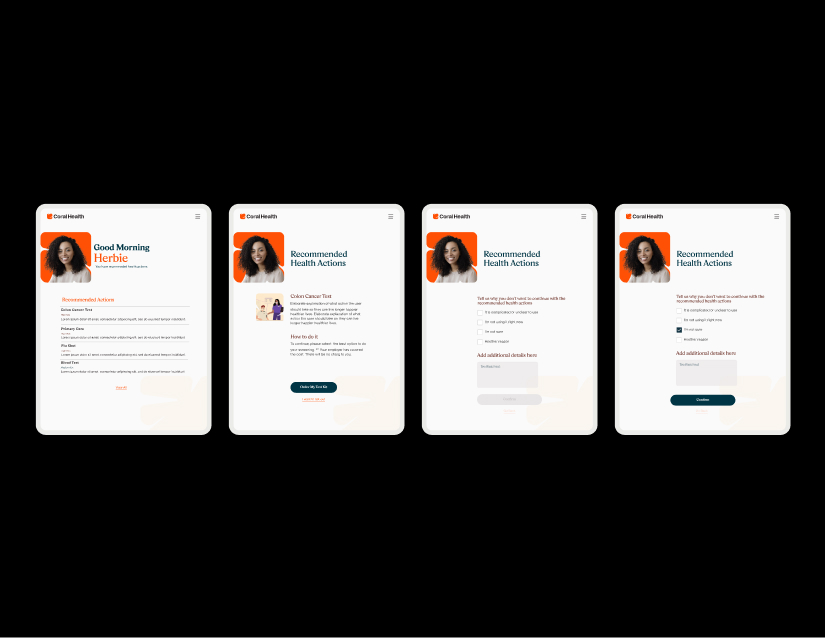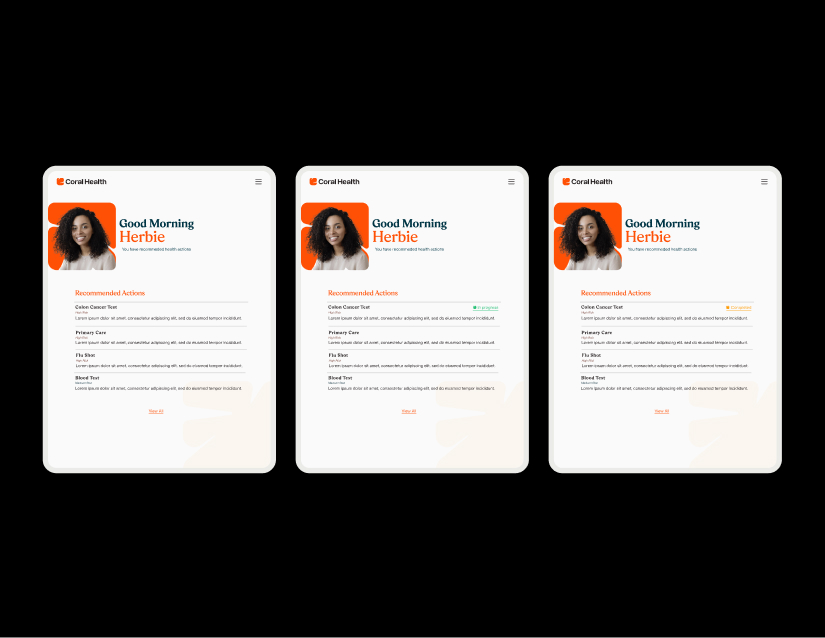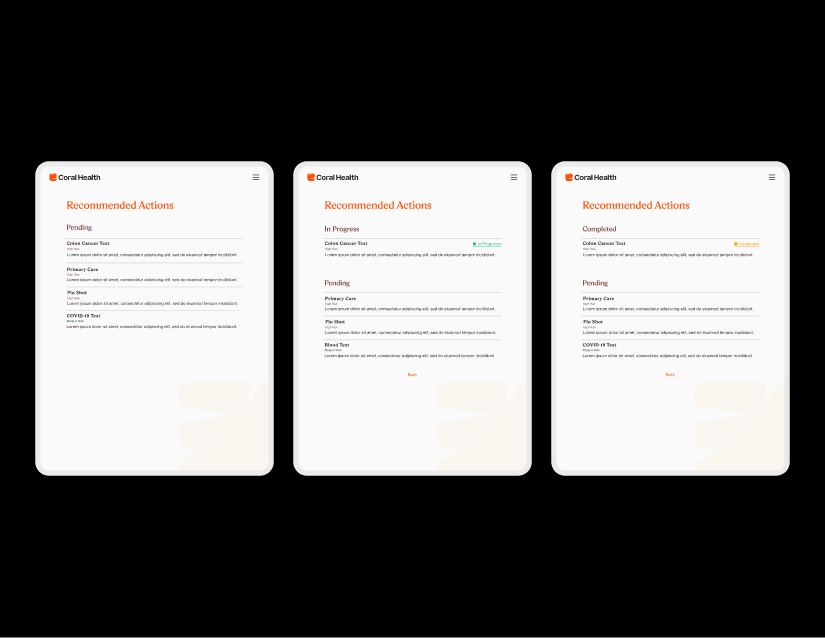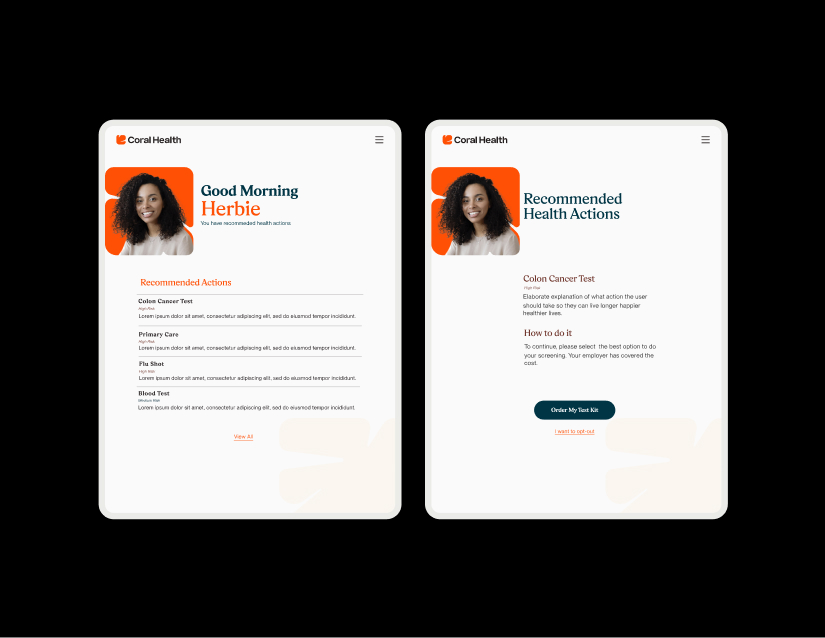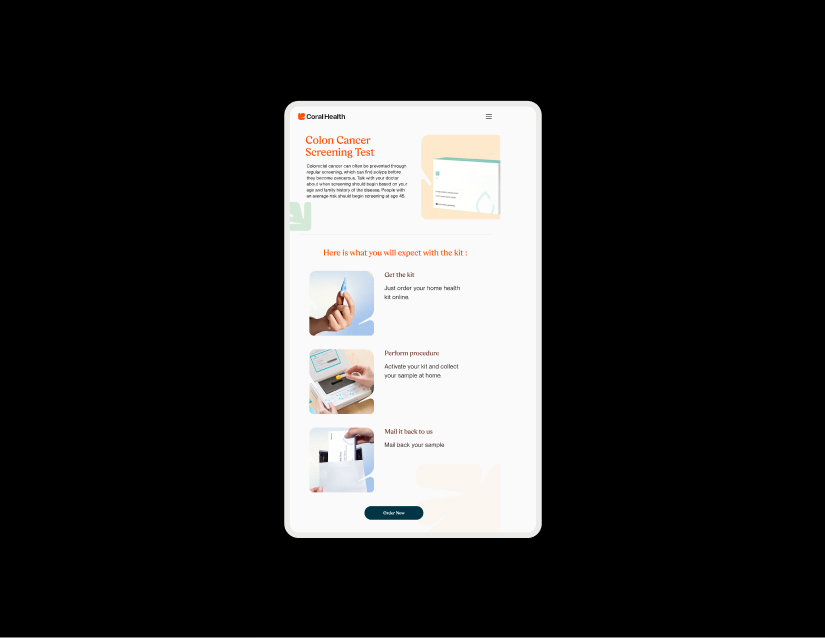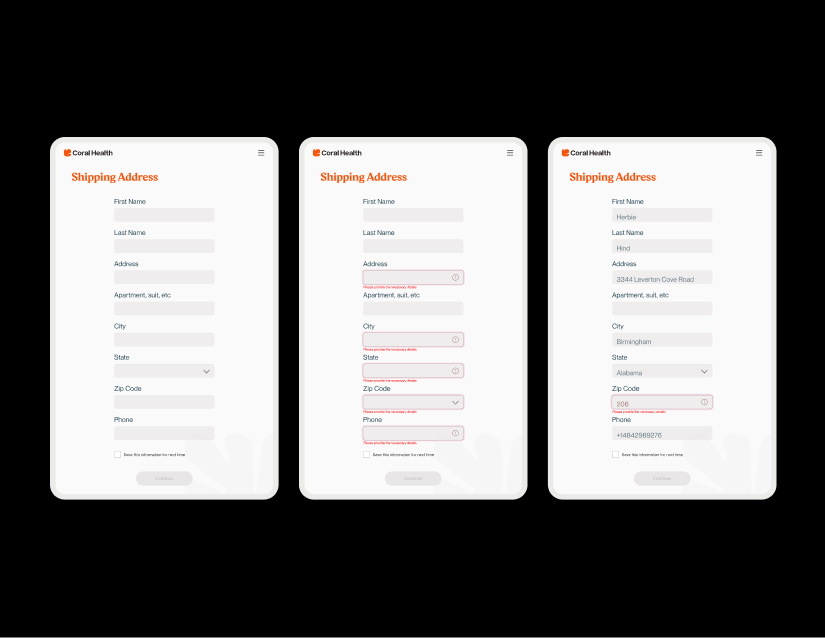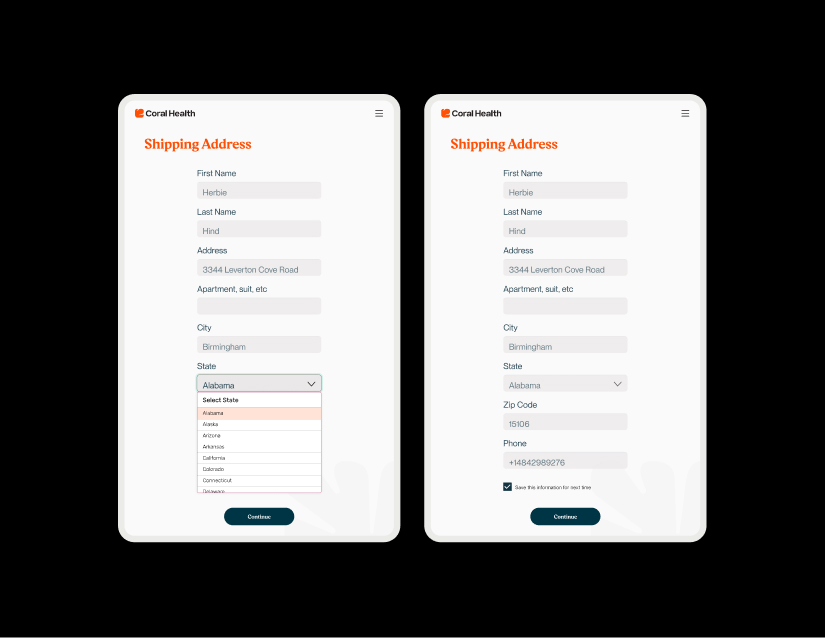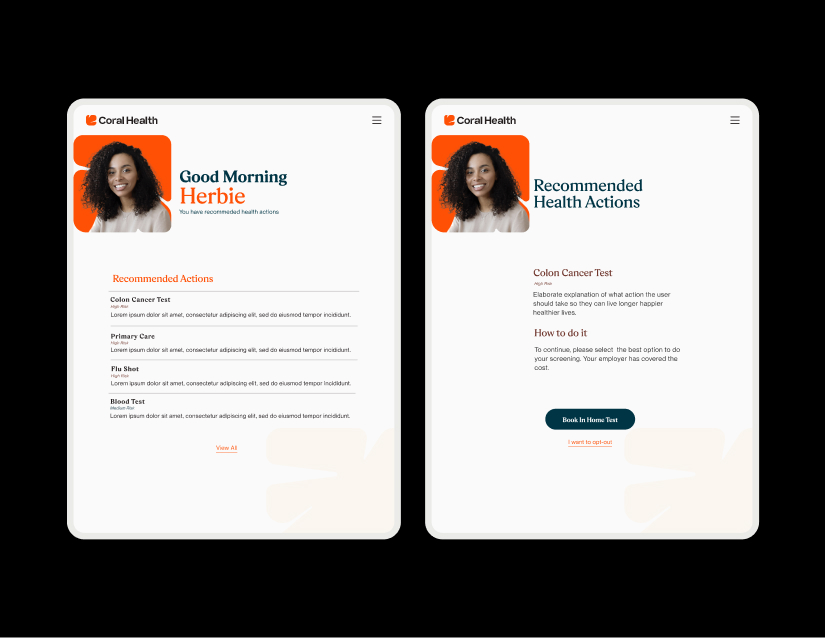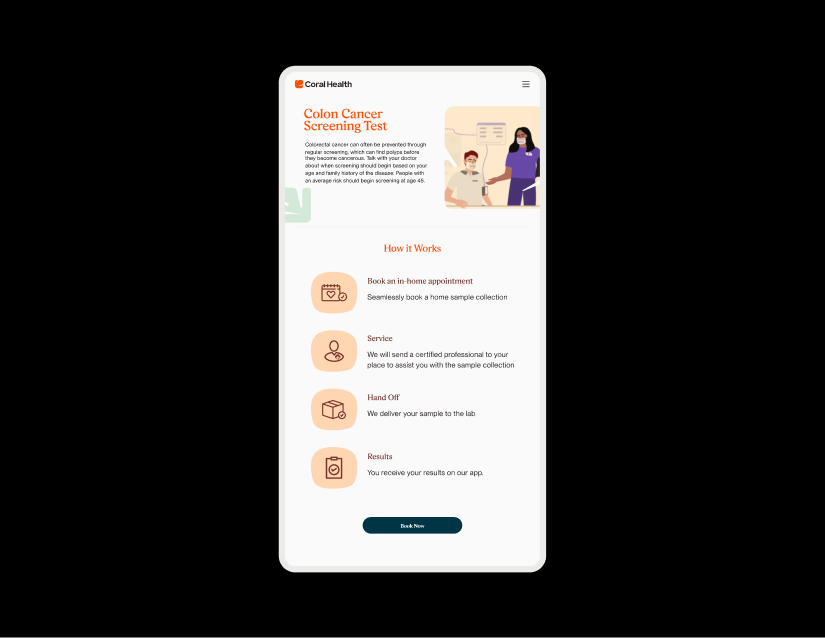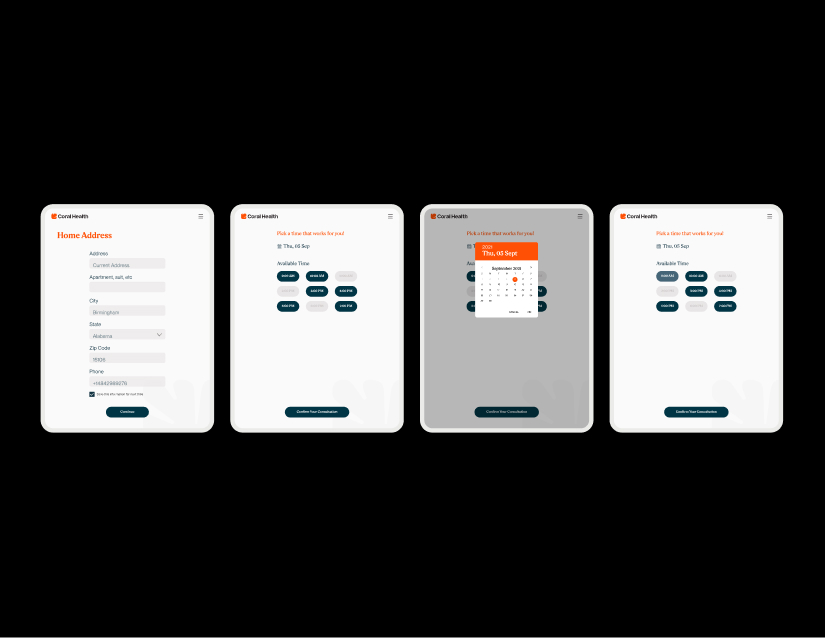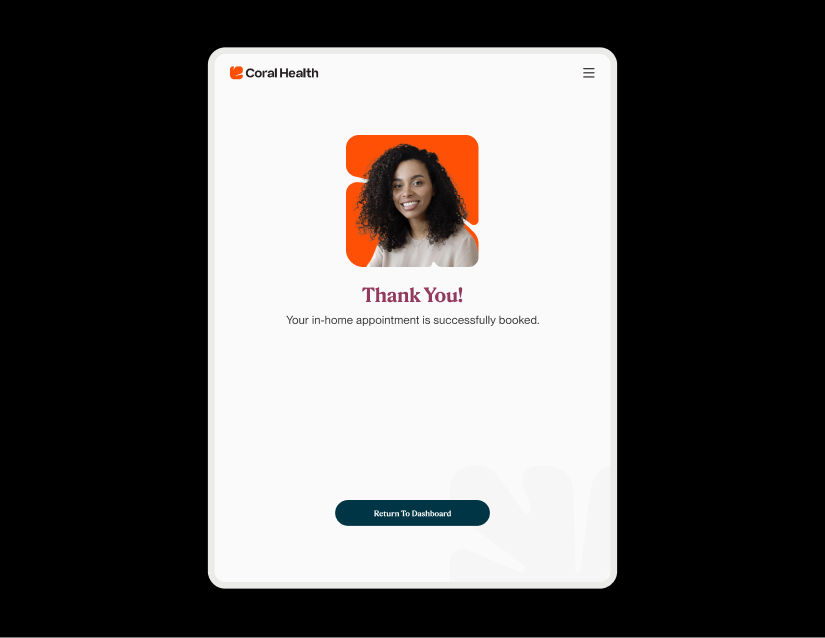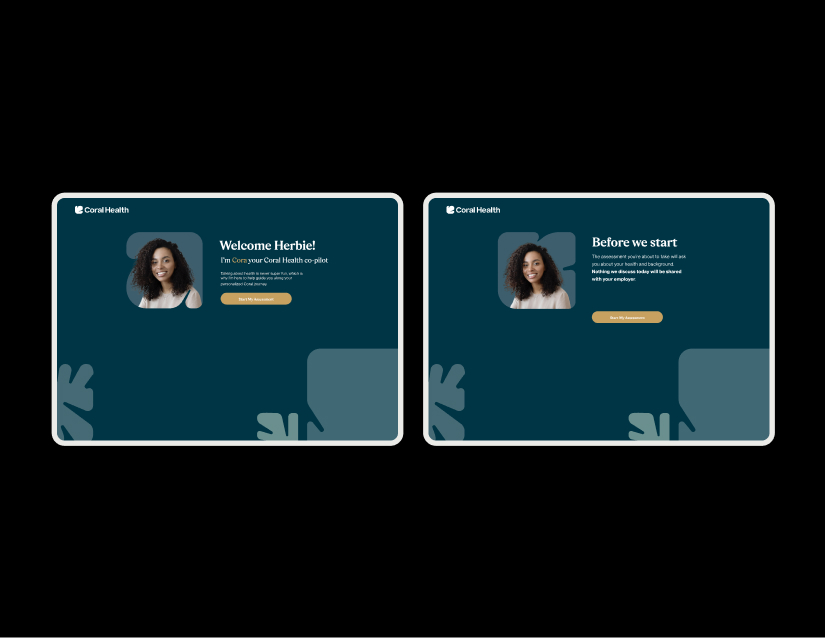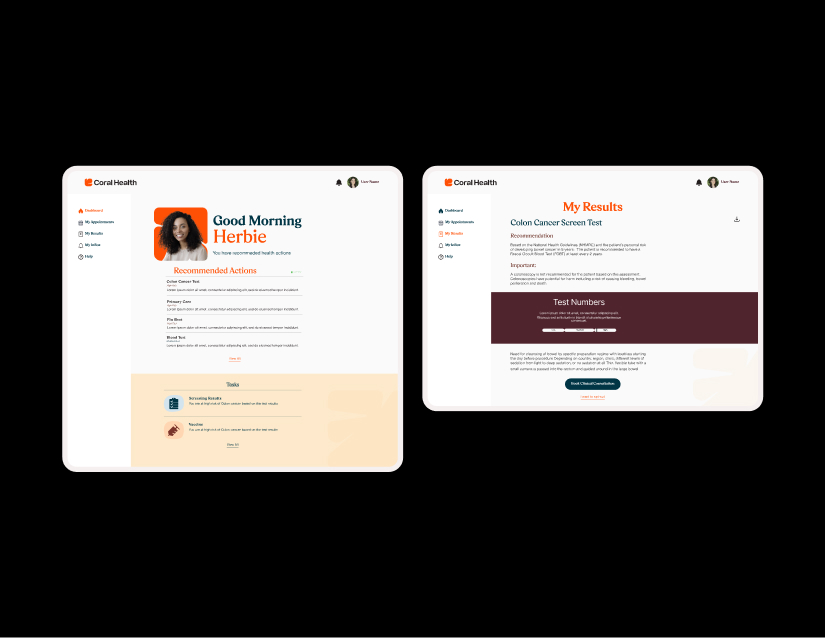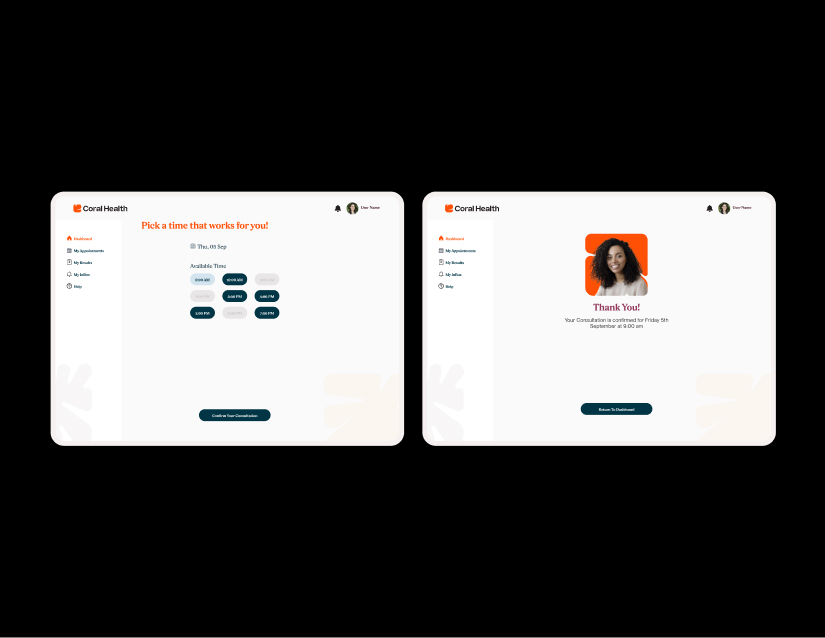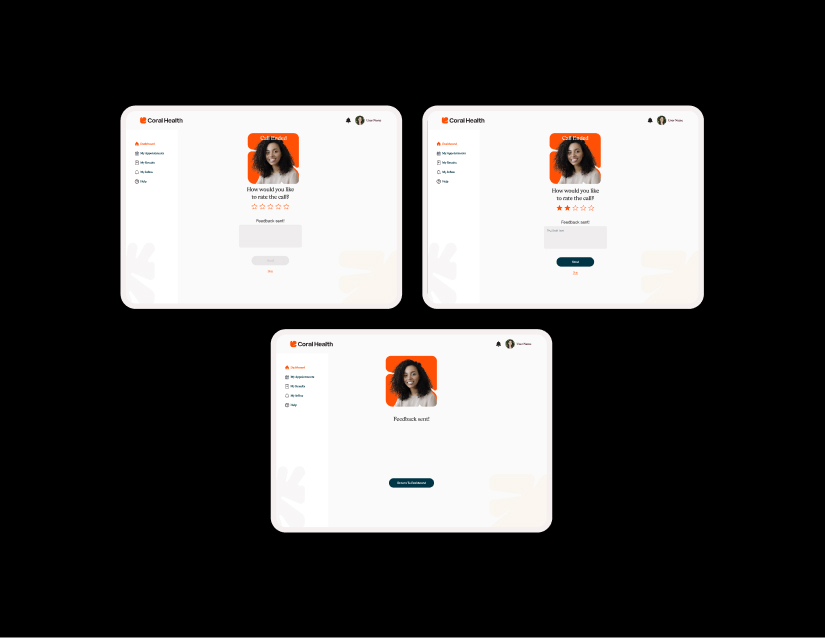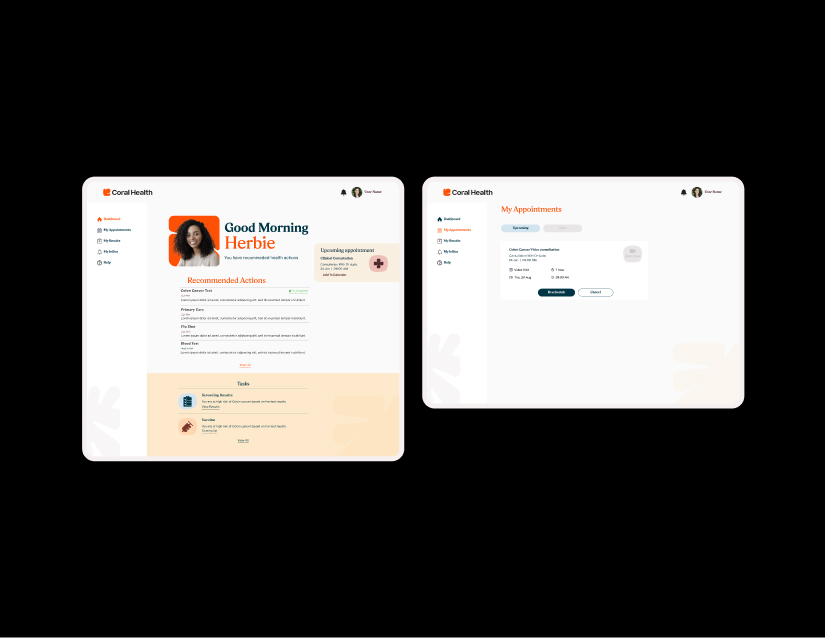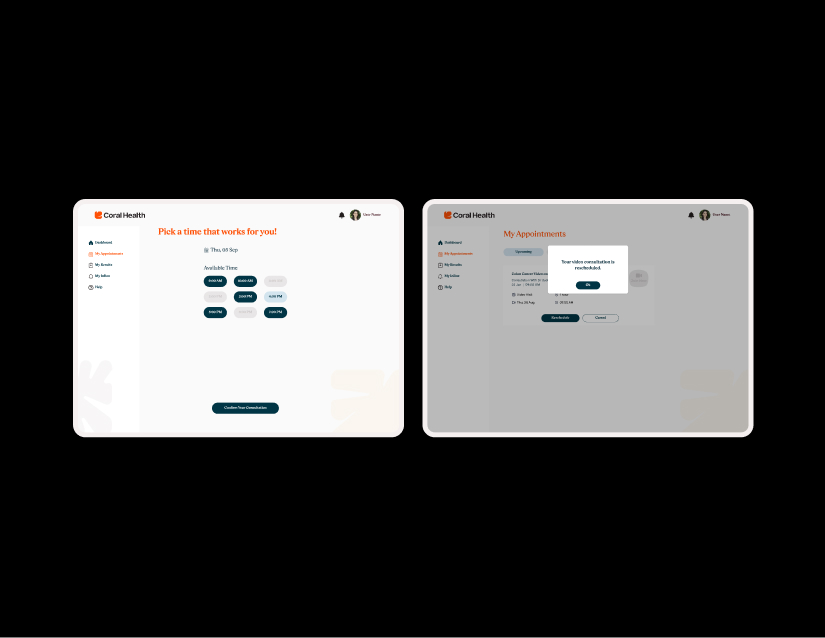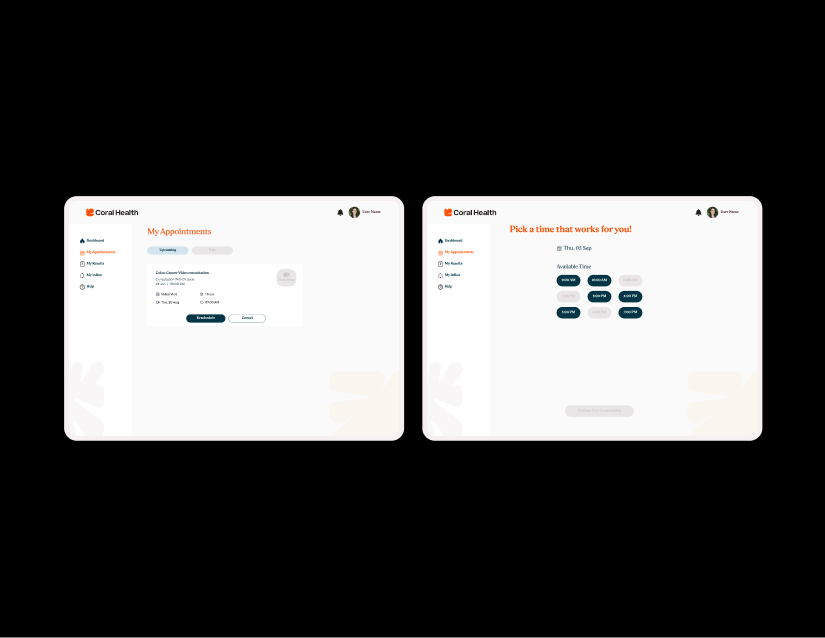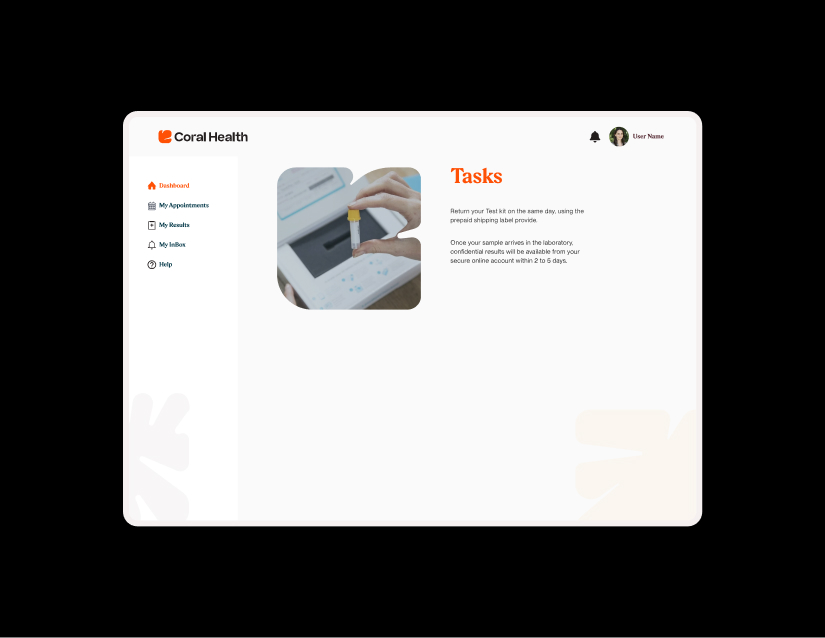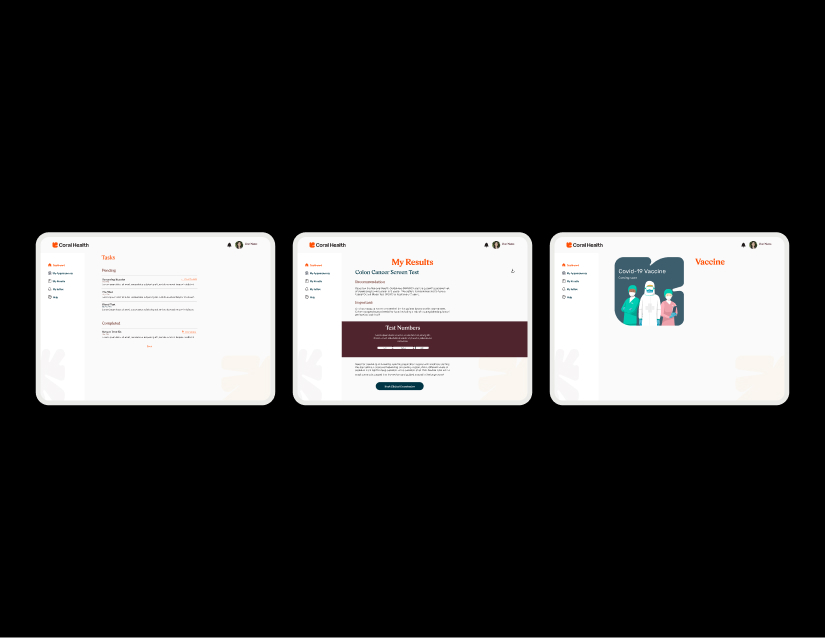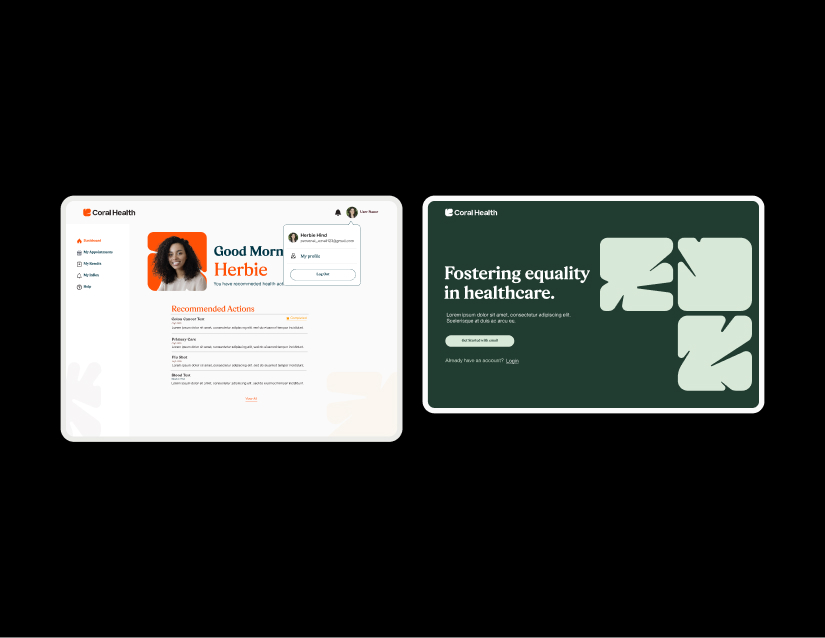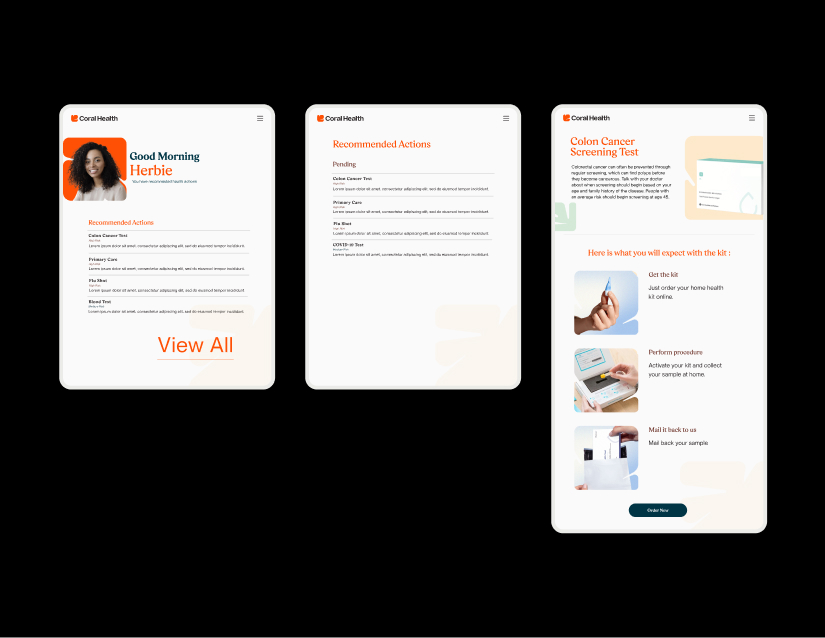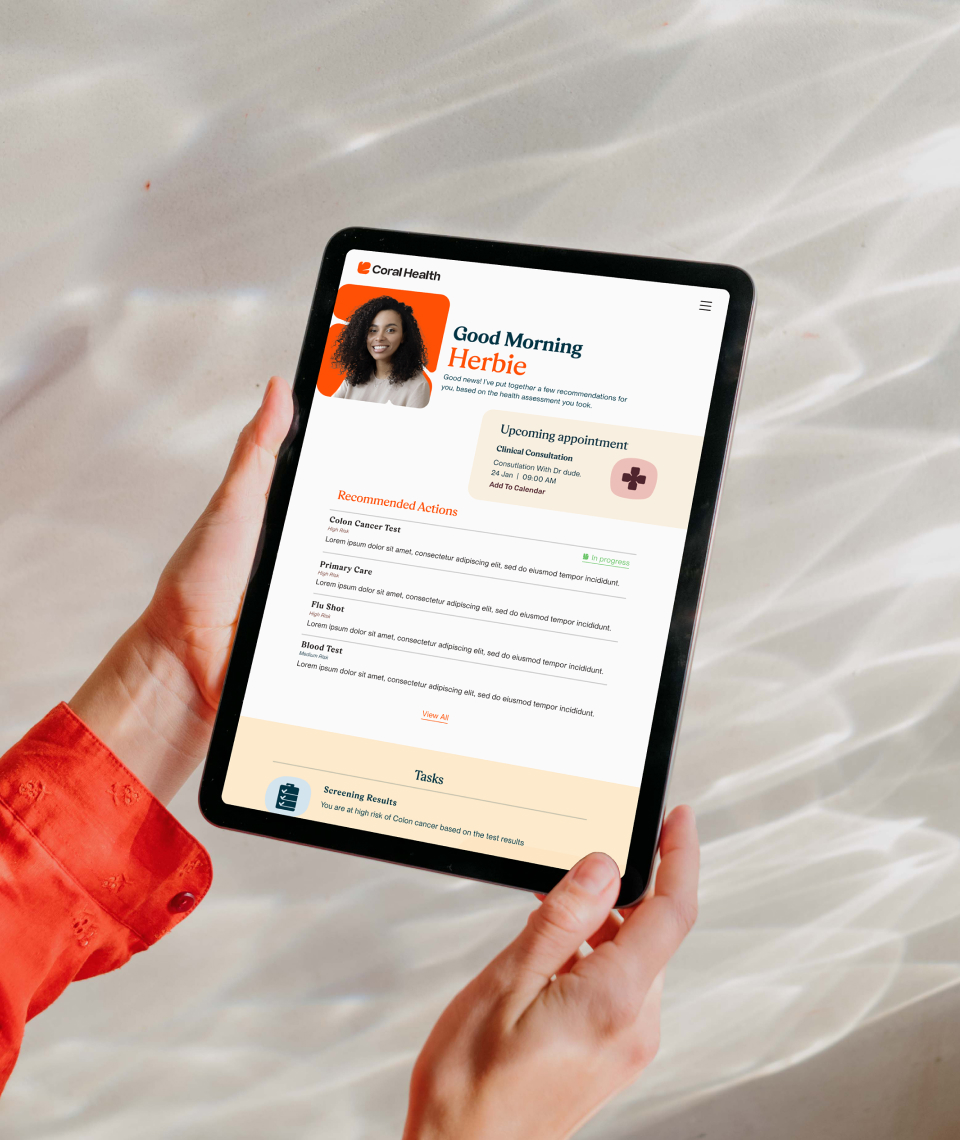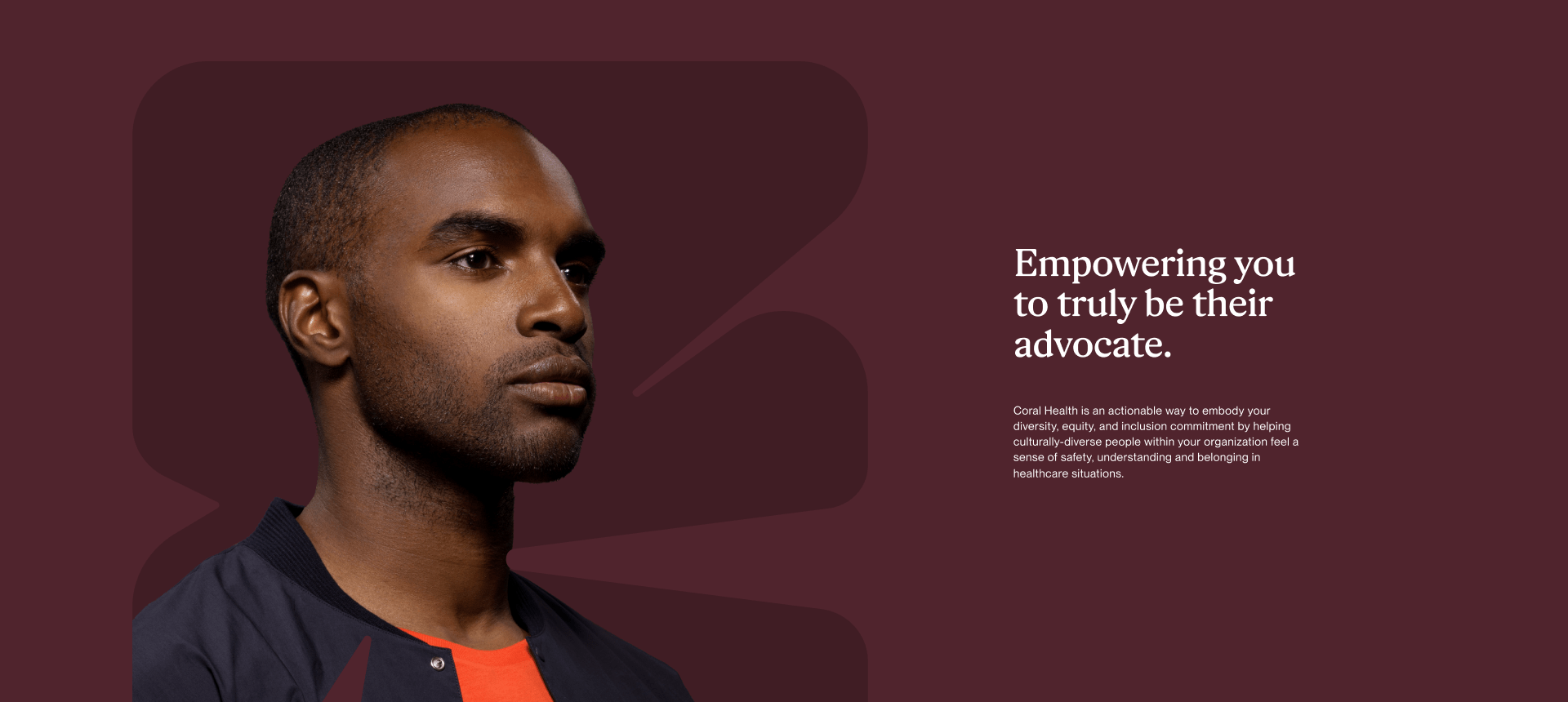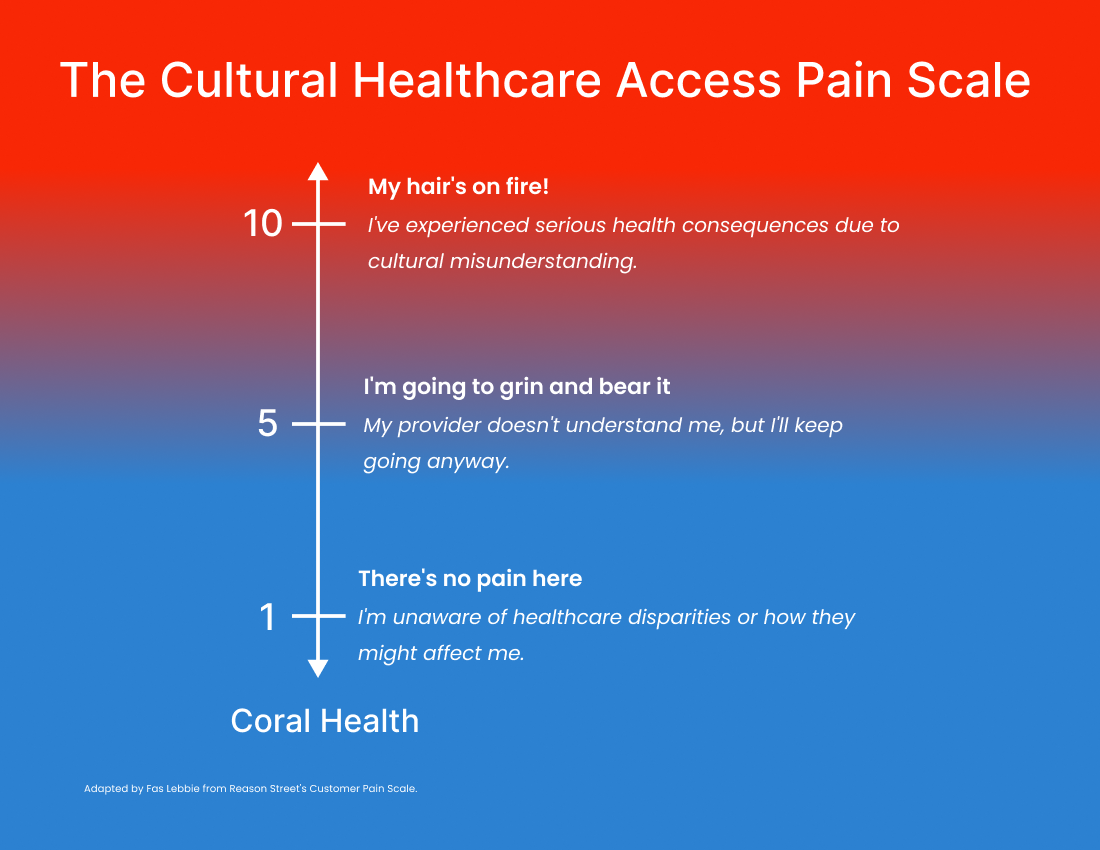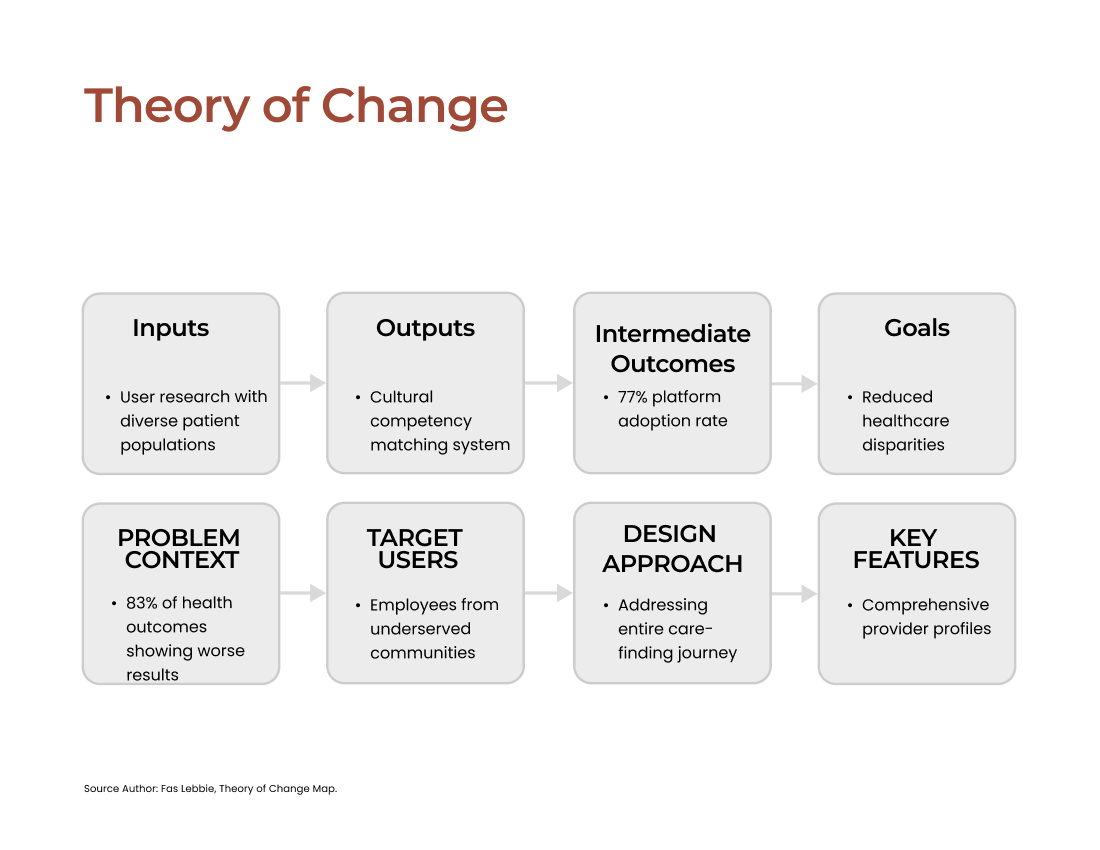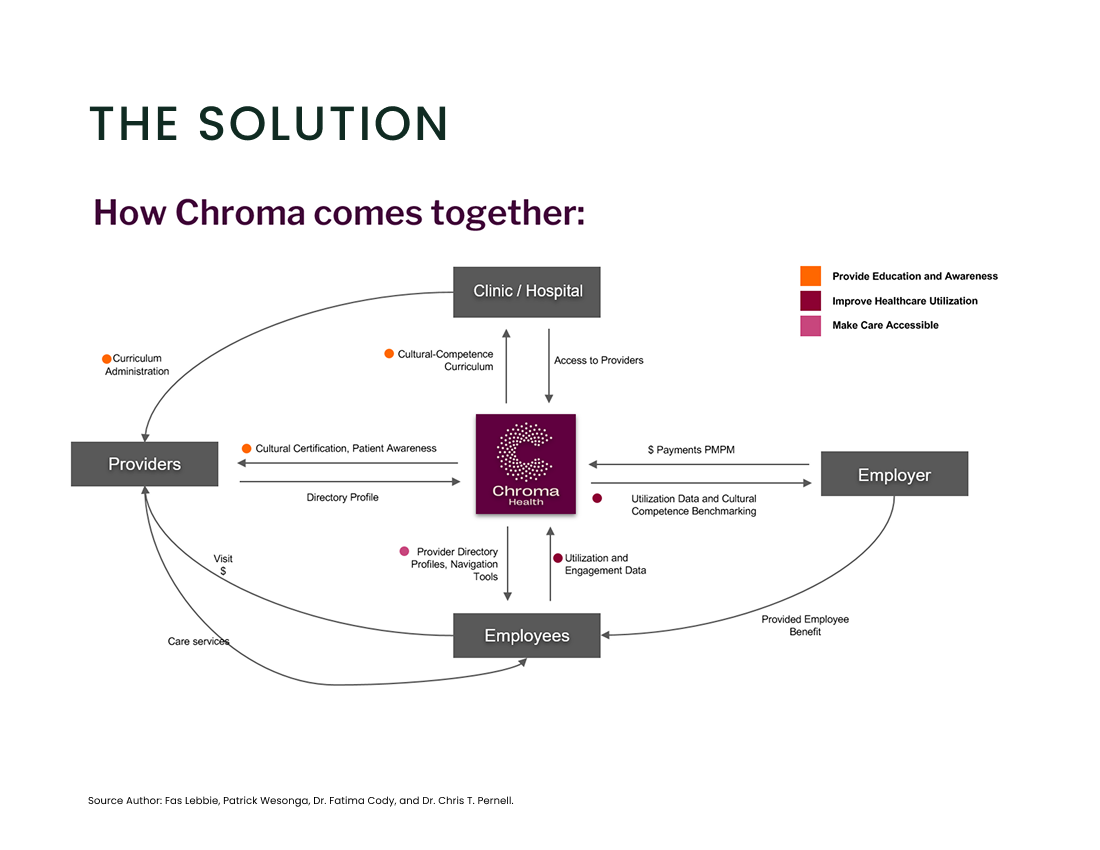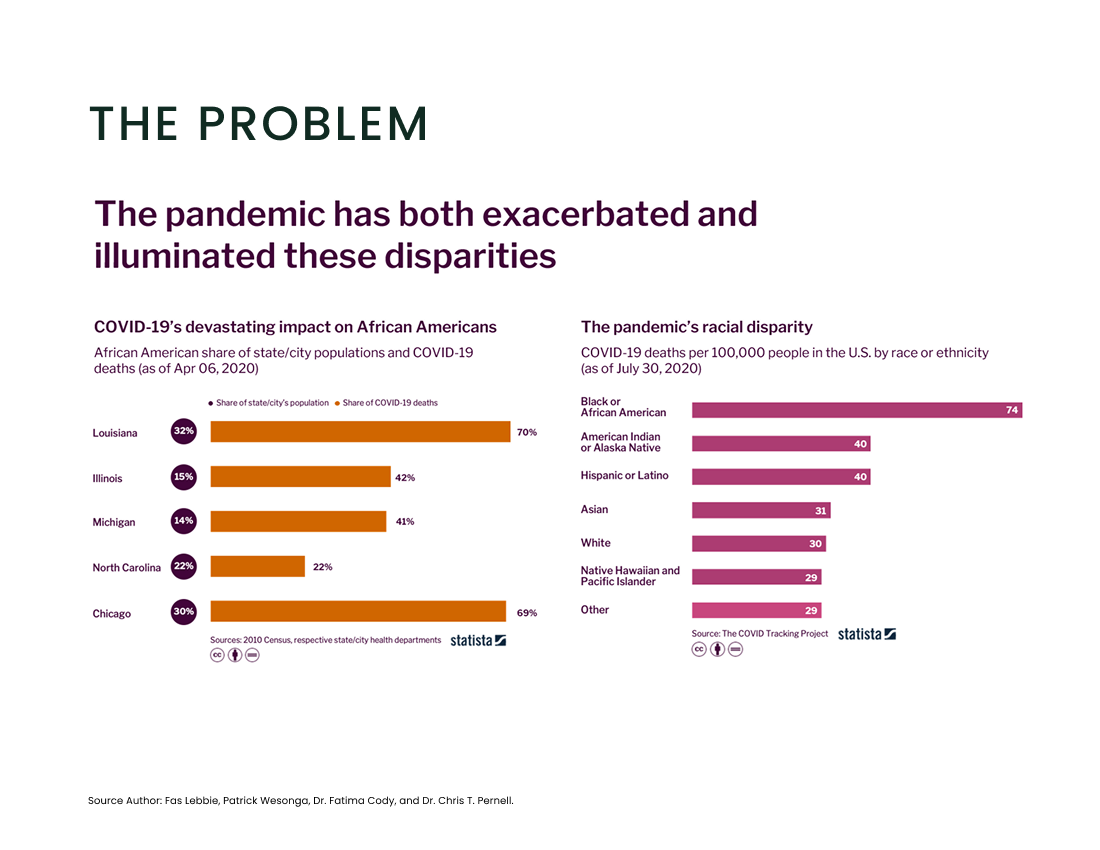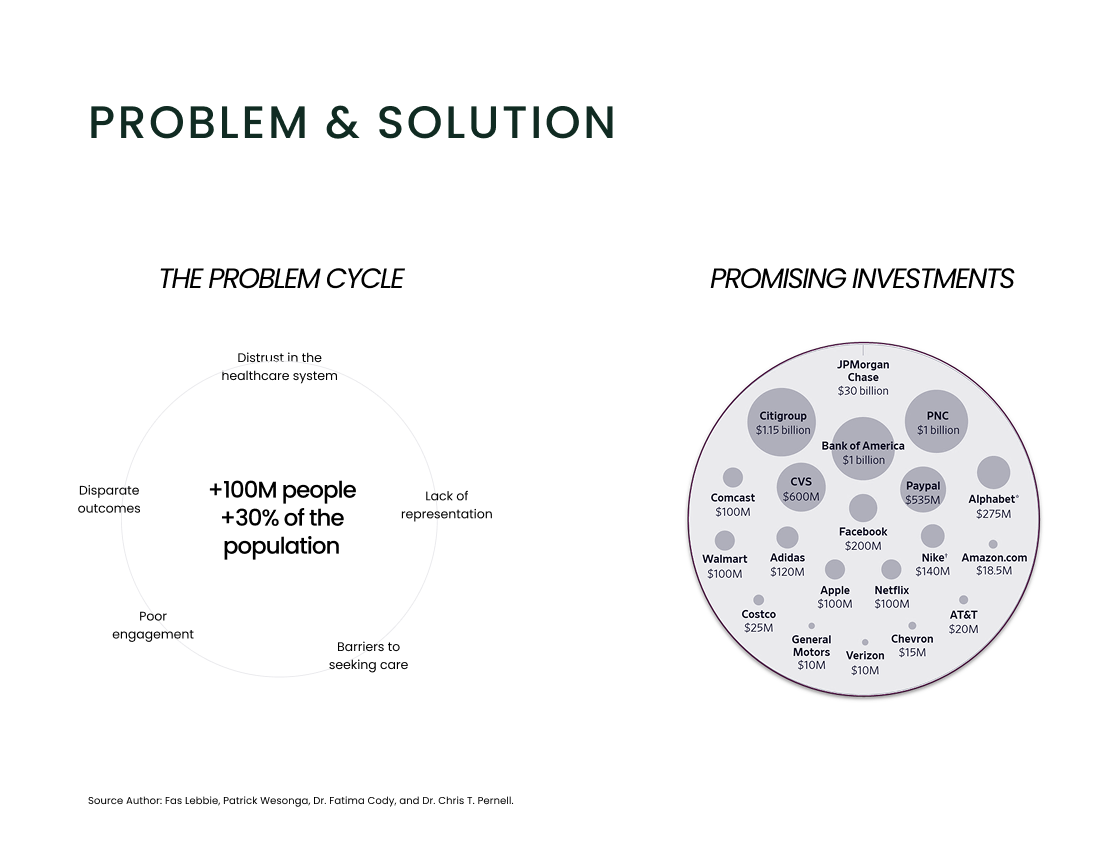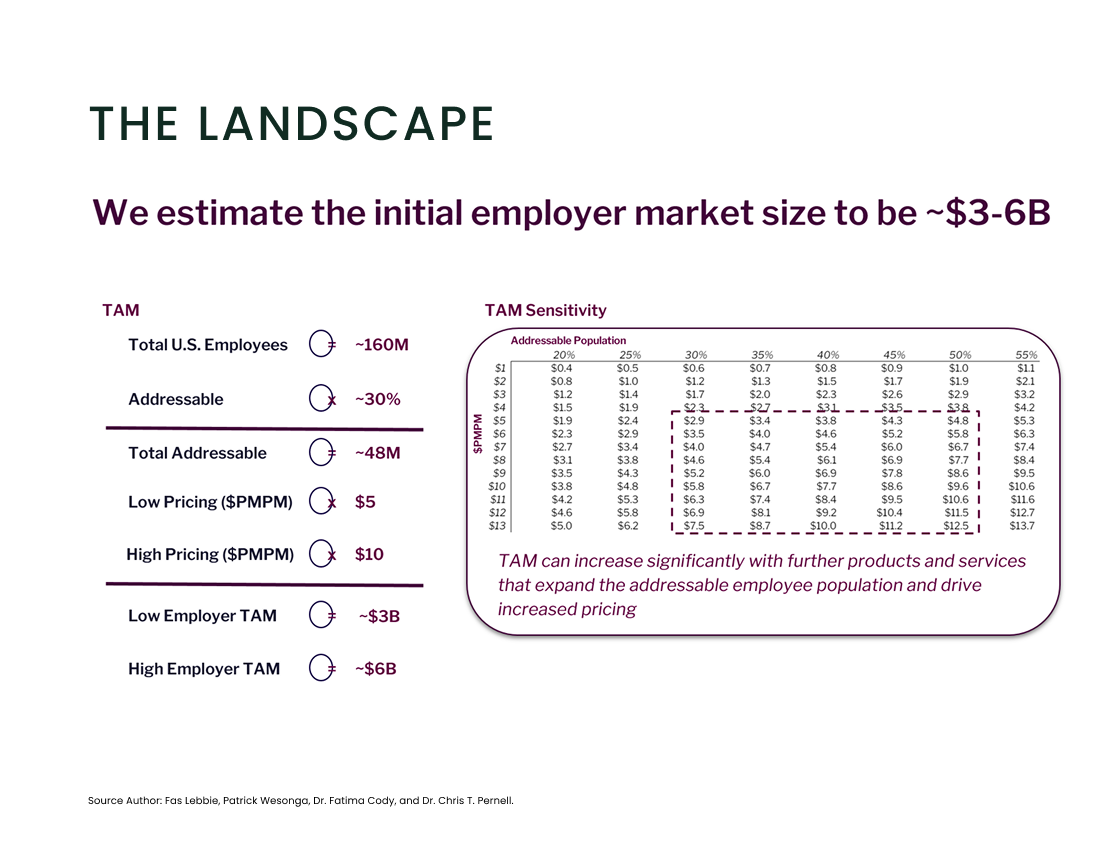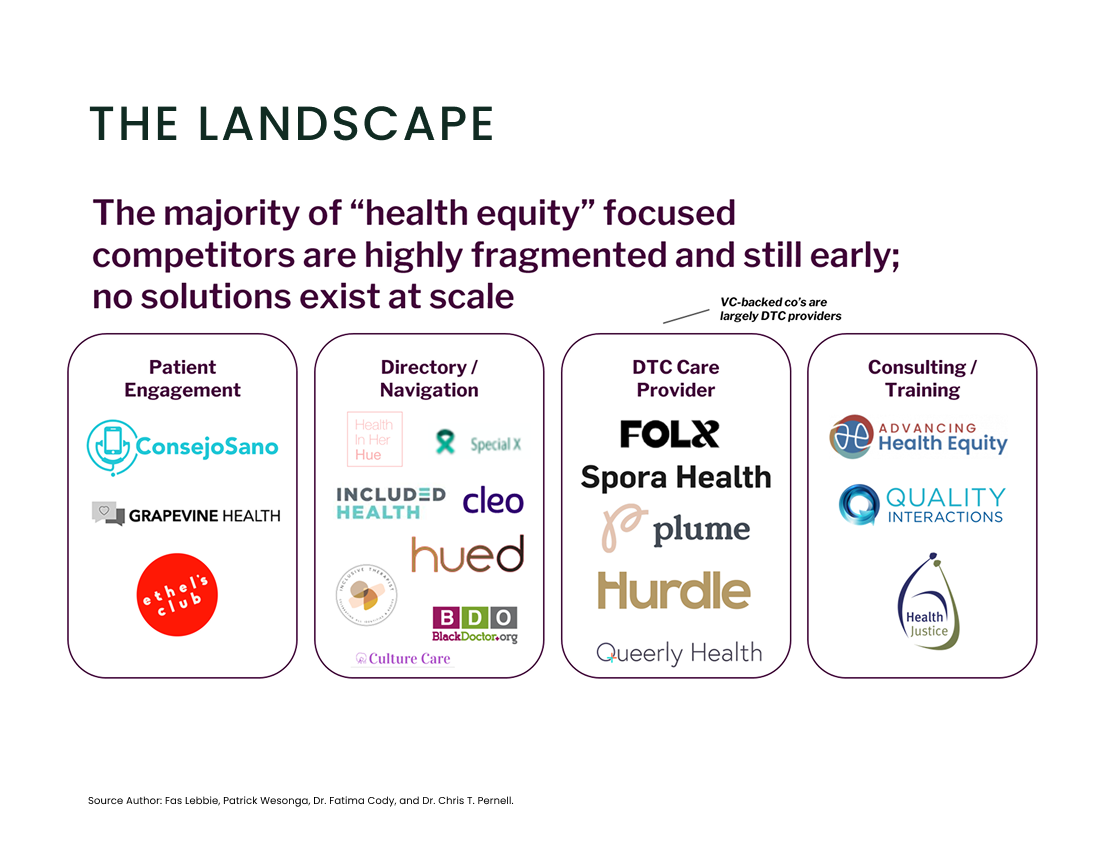Addressing healthcare inequities by developing culturally-competent pathways for underserved communities.
Streamlined onboarding welcomes users with clear value proposition and intuitive authentication flow.
User-friendly sign-up flow collecting essential information to match patients with culturally appropriate healthcare providers.
Personalized dashboard delivering tailored health recommendations to Herbie with culturally relevant preventive care opportunities.
Accessible support screen providing direct connection to assistance, reinforcing Coral Health's commitment to reducing healthcare barriers.
Comprehensive profile management allowing users to share personal information for improved cultural matching with healthcare providers.
Health results interface presenting screening recommendations with clear cultural context to encourage appropriate preventive care.
Personalized health action dashboard connecting users with culturally competent preventive care options covered by employer benefits.
Diverse healthcare leadership showcasing Coral Health's commitment to representation in addressing healthcare disparities
Interactive recommended health actions flow empowering users to access culturally appropriate preventive care with transparent opt-out options.
Personalized dashboard tracking healthcare recommendations with clear status updates, making preventive care accessible for underserved communities.
Status indicators showing health action progress, helping users from diverse backgrounds track their preventive care journey.
Organized health action categories ensuring underserved patients can easily track pending, in-progress, and completed preventive screenings
Accessible health recommendation interface empowering users to take control of their preventive care with employer-covered options.
Educational colon cancer screening information bridging knowledge gaps that contribute to healthcare disparities in underserved communities.
User-friendly shipping address interface removing practical barriers to accessing at-home screening kits for underserved populations.
Streamlined shipping information form with state selection dropdown, simplifying healthcare access for diverse communities.
Personalized preventive care dashboard with in-home testing option, making culturally competent healthcare more accessible.
Step-by-step in-home screening process with culturally diverse illustration, breaking down barriers to preventive care.
Convenient appointment scheduling interface with flexible timing options, removing access barriers for working individuals from underserved communities.
Confirmation screen celebrating successful appointment booking, providing accessible healthcare access for underserved communities.
Diverse leadership team representing cultural authenticity, reinforcing Coral Health's mission to connect underserved communities with healthcare providers who understand their experiences
Integration placeholder for Zocdoc flow, connecting users with diverse healthcare providers through unified systems.
Welcoming onboarding with Cora as a cultural navigator, building trust through representation for underserved healthcare seekers.
Assessment completion screens guiding users through personalized healthcare journeys tailored to cultural needs and concerns.
Desktop dashboard displaying health recommendations alongside detailed test results, making preventive care culturally accessible and understandable.
Appointment scheduling interface with sidebar navigation, providing multiple paths to culturally competent healthcare services.
Time selection and confirmation screens with clear feedback, reducing scheduling barriers for accessing culturally competent care.
Comprehensive messaging system with appointment reminders, increasing healthcare engagement among underserved populations.
Detailed appointment reminders with preparation instructions, addressing practical barriers that contribute to healthcare disparities.
Virtual consultation interface connecting diverse patients with culturally competent healthcare providers, reducing geographical barriers to care access.
User feedback flow enabling quality improvement while valuing patient perspectives from underserved communities.
Desktop dashboard with appointment management, empowering users to stay engaged with preventive care recommended for their cultural context.
Appointment management screens with clear cancellation options, respecting users' autonomy in their healthcare journey.
Flexible scheduling options with confirmation notifications, accommodating diverse work schedules to increase healthcare access.
Comprehensive appointment management interfaces allowing users to easily navigate their healthcare journey on their terms.
Clear at-home testing instructions with transparent result timeline, making preventive screening accessible across cultural barriers.
Task management, test results, and vaccine information screens providing comprehensive health guidance tailored to diverse needs.
User profile dropdown alongside mission-focused welcome screen highlighting Coral Health's commitment to healthcare equality.
Diverse provider profiles showcase cultural competency credentials and specialization areas.
Desktop platform integrates comprehensive health tracking with provider recommendations for complete care management.
Tablet-optimized interface demonstrating responsive design with culturally-relevant preventive care guidance, making healthcare navigation accessible across different devices for underserved communities.

